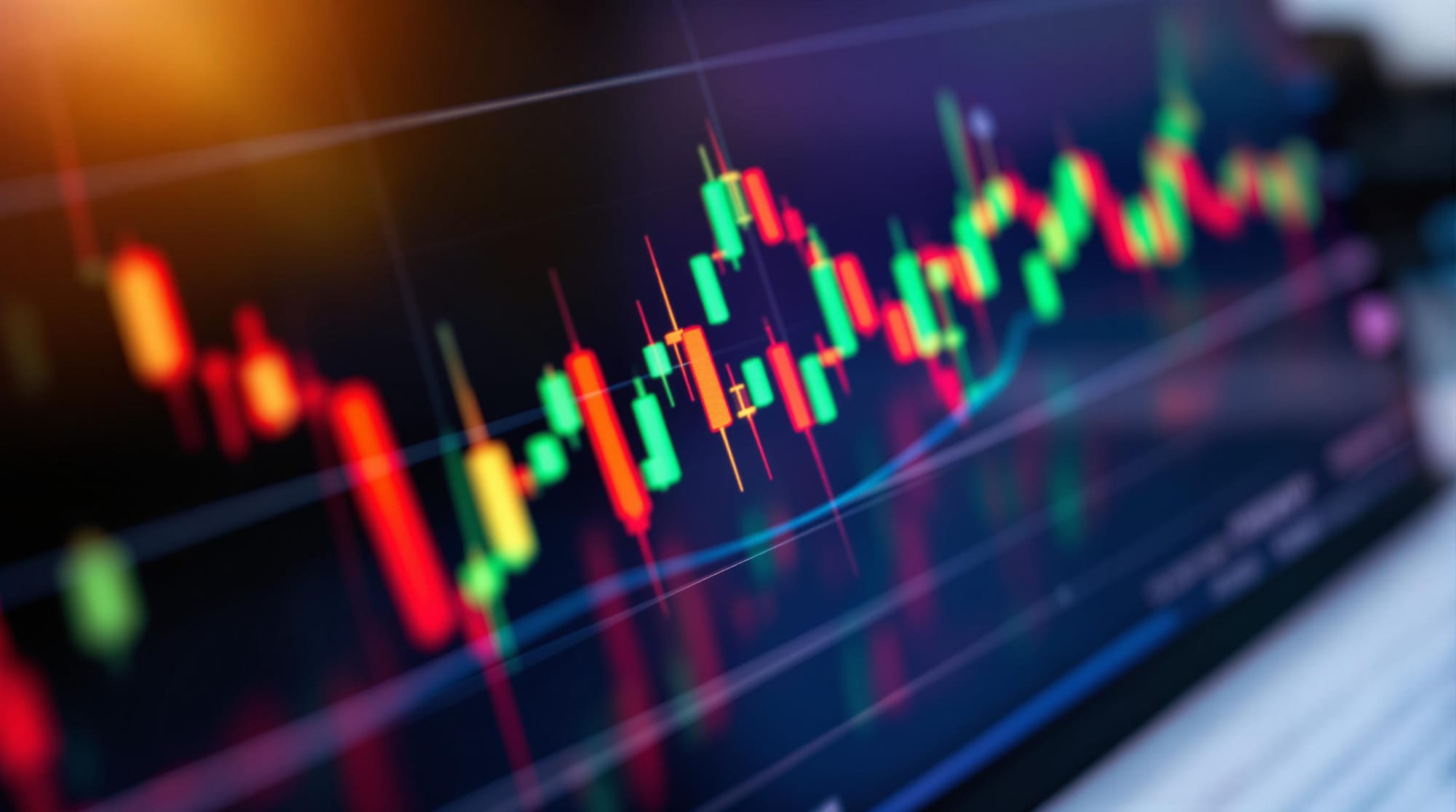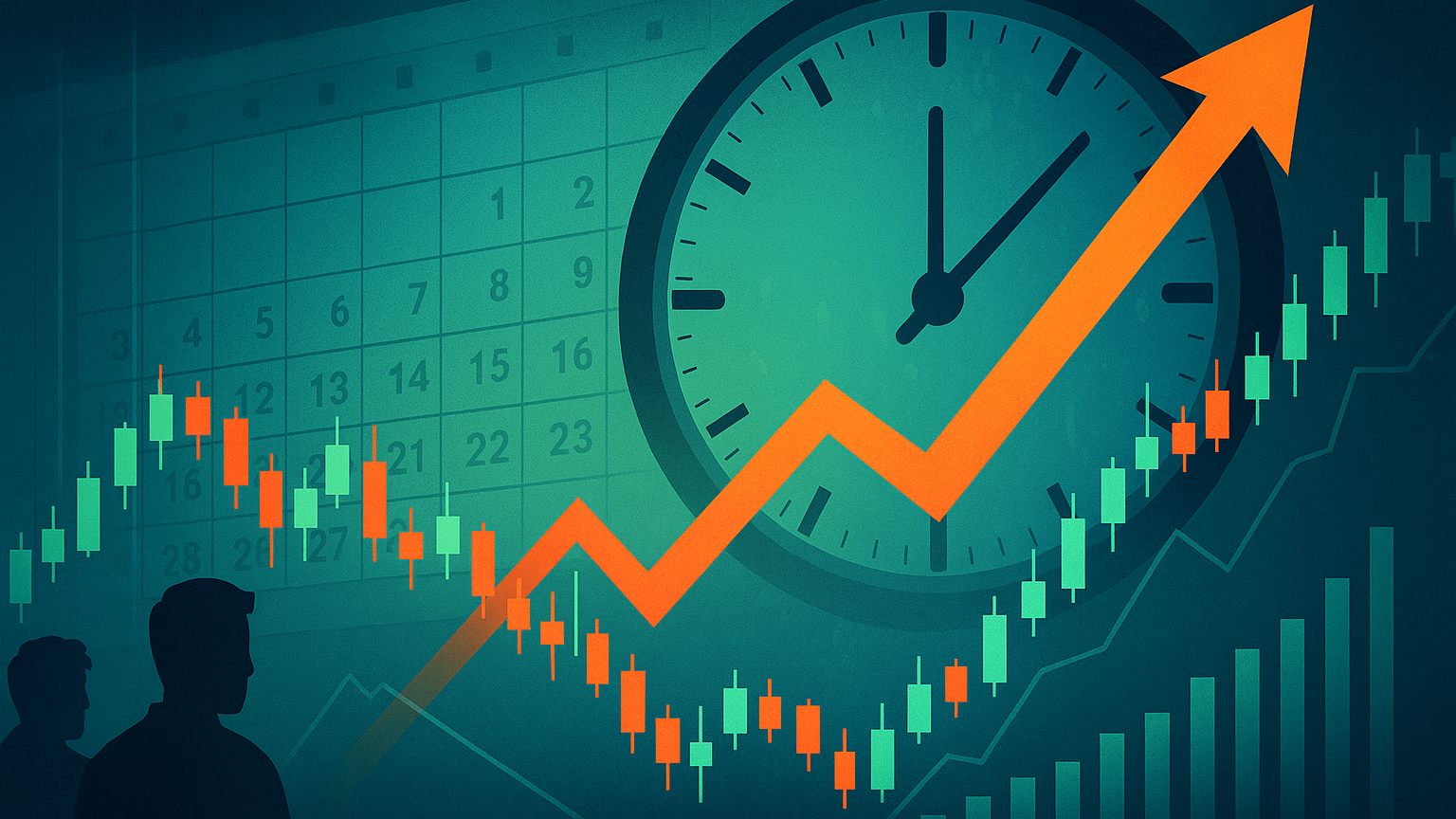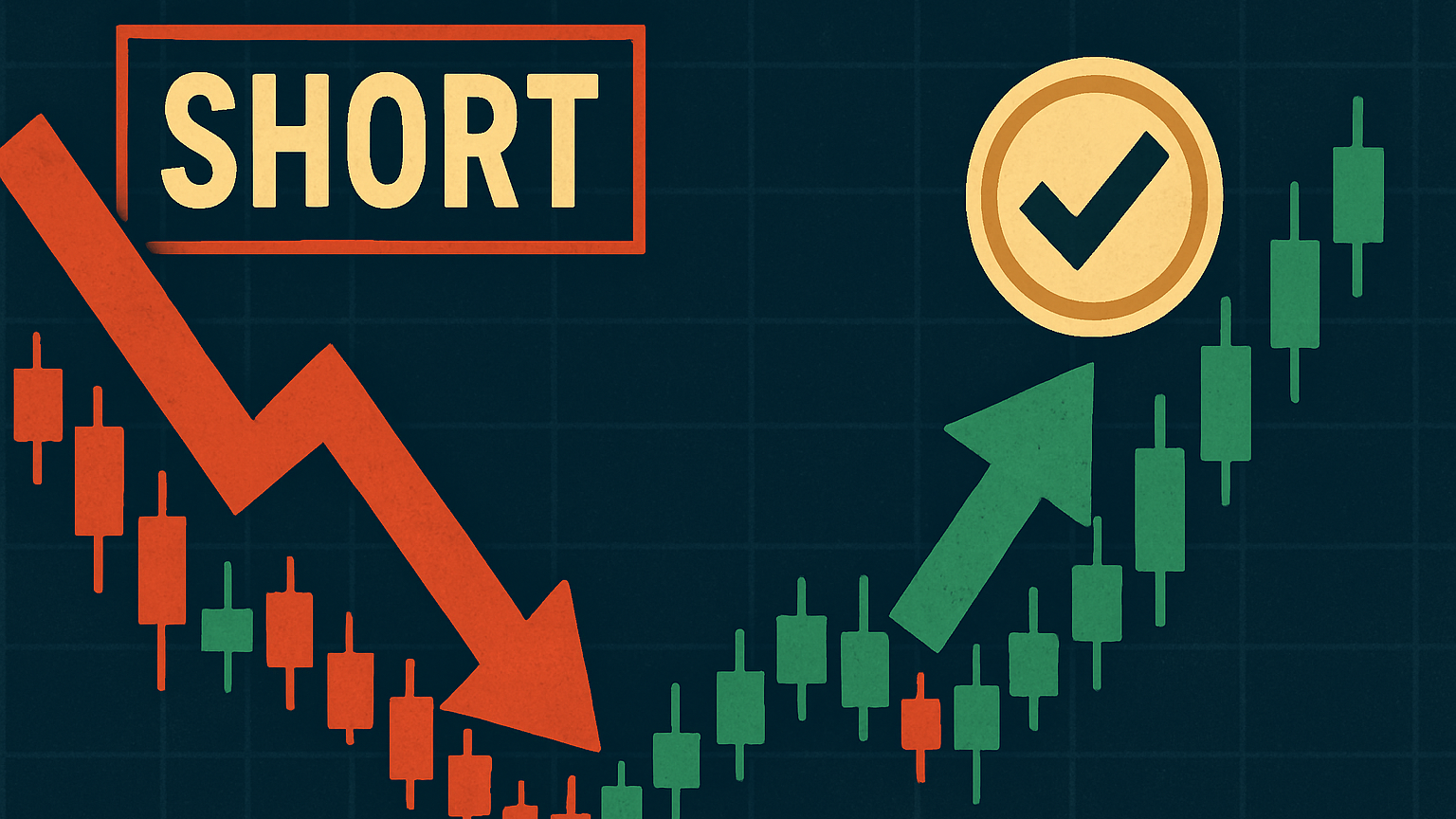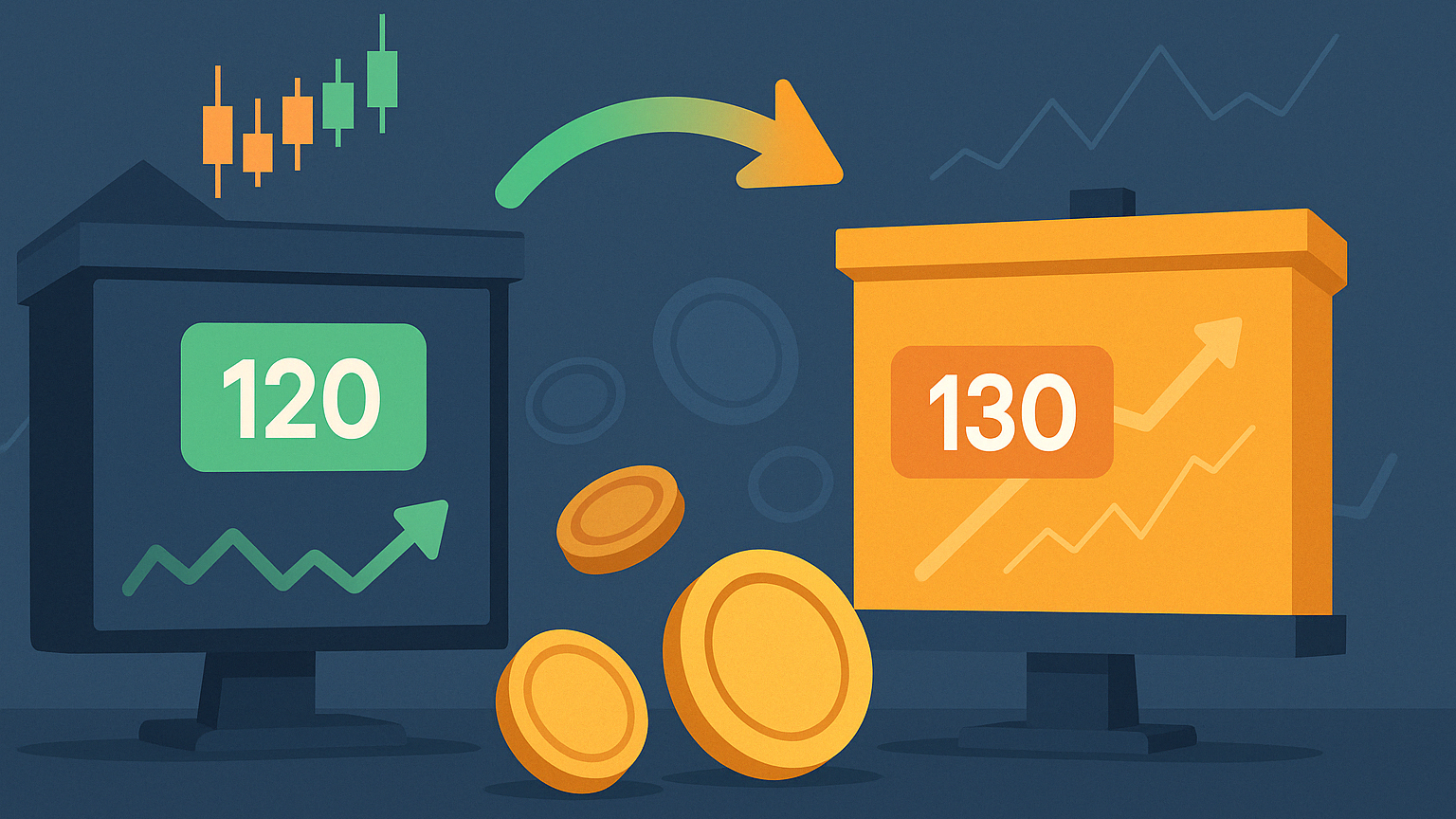Master day trading with expert strategies in technical analysis, risk management, and trading psychology to improve your success rate.
Day trading is challenging but rewarding for those who master the right strategies. Only 3% of traders consistently profit, so preparation and discipline are crucial. Here’s a quick breakdown of what successful day traders focus on:
- Technical Analysis: Use advanced chart patterns, volume analysis, and multi-timeframe strategies.
- Risk Management: Limit risk to 1–2% per trade and aim for favorable risk-reward ratios like 1:3.
- Trading Psychology: Build emotional resilience, stick to plans, and avoid impulsive decisions.
- Technology Tools: Leverage platforms like TradingView for analysis and automation systems for precision.
Quick Overview
| Focus Area | Key Takeaways |
|---|---|
| Technical Analysis | Identify high-probability setups using charts. |
| Risk Management | Protect capital with strict position sizing. |
| Trading Psychology | Stay disciplined and manage emotions. |
| Technology Tools | Use automation and AI for better execution. |
Master these skills to improve your trading outcomes and navigate the fast-paced world of day trading.
The Only Technical Analysis Video You Will Ever Need
Technical Analysis Methods
Day traders rely on technical analysis to identify high-probability setups. Modern techniques integrate multiple timeframes, volume analysis, and advanced chart patterns to create a well-rounded trading strategy.
Trading Multiple Timeframes
Analyzing price action across different timeframes, often with a 4–6 factor gap, provides a clearer picture of market trends .
For example, in late November, BBWI showed a positive 12-week SMA crossover on the weekly chart, which was confirmed by a 10-day SMA crossover on the daily chart. This alignment preceded a 27% rally .
How timeframes are used:
| Timeframe Level | Purpose | Example Usage |
|---|---|---|
| Higher (4–6×) | Identify trend direction | Weekly chart for overall bias |
| Intermediate | Confirm trading signals | Daily chart for setup validation |
| Lower | Fine-tune entry/exit | 4-hour chart for precise timing |
Volume and Order Flow
Volume analysis is a key tool for understanding market behavior. Two important concepts are:
- High Volume Nodes (HVN): These areas represent the market's value zone, where about 70% of a session's volume is traded. HVNs often serve as strong support or resistance levels .
- Low Volume Nodes (LVN): These are regions of low liquidity where price tends to move quickly.
"As an order flow trader, volume profiles are at the core foundation of all my trading strategies."
This insight from Adam at Jumpstart Trading highlights how understanding volume profiles can help traders pinpoint high-probability opportunities .
Complex Chart Patterns
Advanced chart patterns, when confirmed, can lead to strong trading outcomes:
- Ascending Triangles: Predict uptrends with a 75% success rate (Anderson, 2023) .
- Double Bottoms: Indicate bullish reversals with a 70% success rate (Smith, 2022) .
- Cup and Handle: Show trend continuation in emerging markets with a 76.3% success rate (Chen and Wang study) .
Dr. Emily Chen's 2020 research revealed that daily charts offer a 72% higher likelihood of successful pattern completion compared to shorter timeframes .
Tips for pattern trading:
- Combine patterns with technical indicators for confirmation.
- Look for volume spikes to validate trades.
- Set stop-loss levels based on the pattern's structure.
- Monitor patterns across multiple timeframes.
Using tools like LuxAlgo's Price Action Concepts toolkit can simplify pattern detection, provide real-time alerts, and make the analysis process more efficient without sacrificing accuracy.
These strategies form a strong base for managing risk effectively in trading.
Risk Control Methods
Managing risks effectively is crucial for protecting your trading capital and maintaining profitability in day trading.
Position Size and Stops
Professional traders often limit their risk to just 1–2% of their account per trade . This careful approach helps safeguard funds during inevitable losing streaks.
Here are some common position sizing strategies:
| Strategy | Description | Best Used When |
|---|---|---|
| Fixed Fractional | Allocates a set percentage of the account | Ideal for beginners or steady growth |
| Fixed Ratio | Adjusts size based on cumulative profits | Useful for systematic account building |
| Volatility-Based | Adapts size to market conditions | Best for trading in volatile markets |
For example, a trader with a $10,000 account risking 1% ($100) per trade and using a 10-pip stop-loss would calculate position size as:
Position Size = (Account Value × Risk Per Trade) / (Pips at Risk × Pip Value per Standard Lot) .
"Position sizing is a critical component of portfolio management... By establishing a specific percentage of capital that can be put at risk per trade, position sizing safeguards trading funds and helps prevent substantial declines in value."
Once position size is determined, the next step is to apply a disciplined risk-reward strategy.
Risk-Reward Ratios
After setting position size, focusing on favorable risk-reward ratios becomes essential. A minimum ratio of 1:3 is often recommended .
Here’s how to calculate risk-reward ratios:
-
For long trades:
Risk/Reward = (Entry Price – Stop Loss) / (Take Profit – Entry Price) -
For short trades:
Risk/Reward = (Stop Loss – Entry Price) / (Entry Price – Take Profit)
For instance, if you're trading XYZ Company stock at $20 with a stop-loss at $15 (risking $500) and a target of $30 (potential gain of $1000), the risk-reward ratio is 1:2 . This structured method promotes disciplined decision-making.
Managing Losses
Beyond stop-loss and risk-reward strategies, managing losses effectively is key. As Benjamin Graham wisely said:
"Avoiding a loss takes priority over improving gains. To make up for a 95% loss in value requires the investor to make an astounding gain of 1900%"
Here are three practical loss management strategies:
-
Stop-Loss Placement:
During high-volatility periods, consider widening your stop-loss to avoid premature exits. Adjust position size to maintain your desired risk percentage . -
Position Monitoring:
Regularly review and adjust stops, especially during low liquidity periods. Avoid setting stops at obvious round numbers to reduce the risk of stop-hunting . -
Recovery Protocol:
After losses, resist the urge to increase position sizes or chase trades. Stick to consistent sizing and evaluate your stop-loss strategy if you’re being stopped out too often .
Even traders with a win rate of just 50% can stay profitable by keeping their average losses smaller than their average gains .
Trading Psychology
Your mindset plays a huge role in day trading success. Research shows that many early failures are linked to mental roadblocks, making it clear that mastering trading psychology is key to staying profitable over time.
Trader Mindset
To trade successfully, you need to build mental toughness and adopt traits that top traders share. A study revealed that 119 out of 120 traders failed due to poor mental habits . This underscores the importance of mindset alongside technical skills.
Here are some key traits to focus on:
| Trait | Description | Impact on Trading |
|---|---|---|
| Discipline | Sticking to your trading plan | Prevents emotional decisions |
| Independence | Making your own choices | Avoids following the crowd |
| Decisiveness | Acting quickly on solid setups | Seizes opportunities without hesitation |
| Flexibility | Adjusting to market changes | Helps maintain consistent performance |
"Attitude is everything. Winners have a unique set of attitudes that allows them to remain disciplined, focused and above all confident. They are not susceptible to the common fears and trading errors." - Mark Douglas
When you strengthen your mindset, you'll naturally gain better control over your emotions.
Controlling Emotions
Keeping emotions in check is critical for trading success. Studies show that traders who stick to predefined stop losses experience 65% less emotional stress during market downturns. Additionally, those who analyze short-term moves within longer-term trends see a 23% boost in profitability .
Here are two practical strategies to manage emotions effectively:
-
Practice Mindful Trading
- Take a break after losses to regain composure.
- Use deep breathing to stay calm during stressful moments.
- Keep a trading journal to track emotional patterns.
-
Build Emotional Resilience
- Start with smaller positions during volatile periods.
- Secure partial profits to reduce pressure.
- Stick to strict daily loss limits to avoid overtrading.
Trading Discipline
Discipline ties everything together. Research shows that traders who responsibly widen their stop losses can improve their win rates by as much as 80% . A consistent routine is the backbone of professional trading.
Here’s what a solid trading routine might look like:
| Time Period | Activities | Purpose |
|---|---|---|
| Pre-Market | Analyze the market and review strategies | Get ready for the trading day |
| Trading Hours | Execute your plan and monitor positions | Stay focused and disciplined |
| Post-Market | Review your performance and journal | Learn from each session |
"No matter how you cut it, there are enormous emotional ups and downs involved." - Paul Tudor Jones
During tough times, scaling down your trades to just 0.5–1% of your capital can protect your account while helping you rebuild confidence . This approach reduces the risk of emotional, impulsive decisions that could lead to bigger losses.
Since 95% of our actions are driven by subconscious habits , it’s crucial to develop strong trading habits through consistent practice. Focus on refining your process, not just the outcomes, and keep detailed records to improve your decision-making over time.
Trading Technology Tools
Technology has revolutionized how traders analyze markets and execute trades, making tools like charting platforms, automated systems, and AI testing essential for modern trading.
Chart Platforms
TradingView is a standout charting platform, trusted by over 70 million traders worldwide and boasting a 4.9-star rating. It offers access to over 400 built-in indicators and 100,000+ community-built ones, making it a go-to resource for technical analysis.
Here’s a quick comparison of TradingView’s popular subscription plans:
| Feature | Essential | Plus | Premium |
|---|---|---|---|
| Monthly Cost | $14.95 | $29.95 | $59.95 |
| Charts per Layout | 2 | 4 | 8 |
| Indicators per Chart | 5 | 10 | 25 |
| Price Alerts | 20 | 100 | 400 |
| Bar Replay | ✅ | ✅ | ✅ |
"My trading dramatically improved after I started using TradingView's Bar Replay mode consistently, and it's my most recommended feature for new traders or those looking to hone their skills." - Lincoln Olson, Investor and Finance Writer
TradingView isn’t just about charting - it also integrates well with automation tools, making it easier to transition from analysis to execution.
Automated Systems
Automated trading systems take things further by enhancing precision and efficiency. Today, 70–80% of trades on U.S. stock exchanges are executed by these systems. Why are they so popular? They offer:
- Speed and Accuracy: Automated systems analyze vast market data in milliseconds and execute trades instantly, eliminating delays caused by human emotion or hesitation.
- Discipline: By sticking to pre-set rules, these systems help traders avoid emotional decisions, especially during volatile times.
- Diverse Strategies: Automation tools can run multiple strategies across various markets simultaneously, helping traders spread risk while maintaining consistent execution.
AI Testing Tools
AI-powered platforms now play a crucial role in refining trading strategies. Take LuxAlgo's AI Backtesting Assistant, for example - it allows traders to test strategies across multiple timeframes without needing coding skills.
Modern AI testing tools typically include features like:
- Real-time optimization for different market conditions
- Easy-to-use natural language interfaces for creating strategies
- Automated scans to identify profitable opportunities
- Advanced engines for fine-tuning settings
These tools simplify strategy development and help traders stay competitive in fast-moving markets.
Wrapping It Up
Key Takeaways
Achieving success in day trading depends on mastering a mix of skills: technical analysis, risk management, trading psychology, and technology tools. While technical analysis and risk management lay the groundwork, trading psychology and tech tools give you an extra edge. The key is to keep learning and building on these core skills.
Keep Learning
Becoming a skilled trader is an ongoing process. Many platforms provide structured learning opportunities to help you grow:
| Platform | Focus Area | Cost |
|---|---|---|
| Bear Bull Traders | Trading Psychology | $99/month Basic |
| Warrior Trading | Technical Skills | $997 Starter Course |
| Humbled Traders | Practical Application | $99/month |
Use what you learn to create and follow clear trading protocols.
What’s Next?
-
Test Your Strategy
Use tools like TradingView's Bar Replay to backtest your strategies with historical data. Regularly tweak them to stay in sync with market changes. -
Manage Risks
Define specific entry and exit points for your trades. Limit your risk by using only a small portion of your capital per trade. -
Track and Improve
Maintain a detailed trading journal. Review your performance and stay informed to continuously refine your approach.







